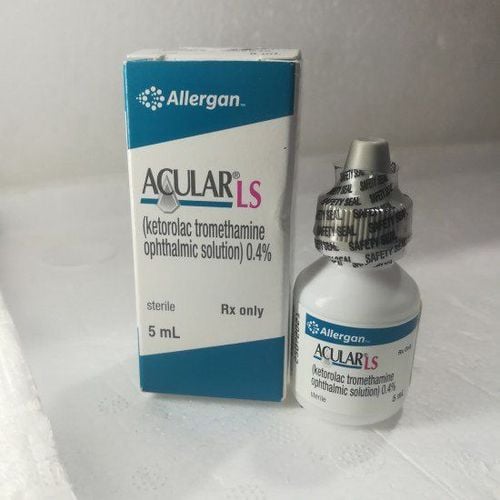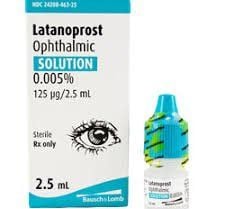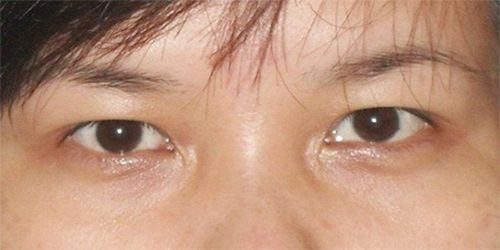This is an automatically translated article.
The article was professionally consulted with Master, Doctor Hoang Thanh Nga - Ophthalmologist - Department of Medical Examination & Internal Medicine - Vinmec Ha Long International General Hospital.Sagging eyelids is a very common phenomenon in middle-aged people. The sagging of the skin under the eyes causes drooping of the eyelids and makes the skin more sensitive. Here are 15 reasons for sagging eyes.
1. Aging
The "levator" muscle is the muscle that holds your eyelids. The skin and tissue around this muscle area stretch and weaken as you age. That can cause your eyelids to droop slowly over time. You may not need treatment for drooping eyelids. However, you can have surgery to lift your eyelids if you can't see well or don't like how it looks. This area of skin can also spill down your eyelids. It's called ptosis and can look like ptosis.2. Eye Injury
Sometimes you accidentally injure or weaken the muscle that lifts your eyelids. The levator muscle will be damaged if someone or something hits you in the eye. Wearing contact lenses for many years or rubbing your eyes a lot can also cause this condition. Let your doctor know if you have these 2 habits as it could be the cause of your drooping eyelids not getting better or even getting worse. Eye surgery can improve this condition.a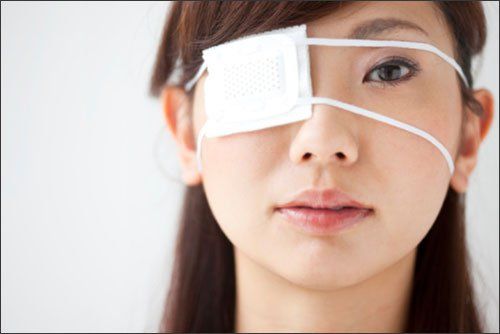
Chấn thương mắt là một trong các nguyên nhân gây mí mắt chảy xệ
3. Eye surgery
Your eyes may droop after cataracts, glaucoma, or lasik surgery. Currently, the cause has not been found. However, some doctors think that the device that holds your eyelid during surgery can stretch or damage your eye muscles. Surgery can also make your eyelids swell, and it usually goes away on its own. If it does not improve after 6 months seek medical advice.4. Congenital
Some children are born with one or two eyelids drooping. It occurs when the muscle that lifts the eyelids doesn't form properly. Children with ptosis may have poorer vision in the top part of the eye. People with congenital ptosis may tilt their head back to see better. Sometimes they will have reduced vision or "lazy eye".5. Myasthenia gravis
Your immune system will sometimes mistakenly attack and weaken the signal between nerves and muscles. It can happen during control of your eyelids, face, throat, and jaw. At night, your ptosis can get worse and cause dark circles under your eyelids .a6. Horner .'s syndrome
Damage to certain nerve pathways causes your eyelids to sag. The affected eye may have smaller pupils and part of your face will not sweat. Some people are born with Horner syndrome. But noncancerous (benign) tumors, such as those in your brain, head, or lungs, can also damage these nerves. During your exam, your doctor will check for conditions that restrict blood flow to your head and neck.
Người bệnh có thể bị sụp mí mắt khi mắc hội chứng Horner
7. Severe headache
You may have symptoms of Horner syndrome if you have migraines or problems with your trigeminal nerve. It's a nerve that runs through your face and jaw. Your eyes will likely return to normal once the headache goes away. But sometimes it can sag during attacks. See your doctor for advice on medications or other treatments to control the cause of your headaches.8. Eyelid tumor
Some doctors refer to eyelid tumors as mechanical ptosis. It just means that something is weighing on your eyelids. A tumor can develop on the eyelid if you have a genetic disorder called neurofibromatosis type 1 (NF1). This tumor is not usually cancerous, but you may need surgery or radiation treatment to remove it. NF1 has no cure.9. Eye infections
Pink eye or stye can cause eye swelling. Your eyelids will likely return to normal as they heal. Eyelid ptosis may go away in 1-2 weeks or so. See your doctor if your eye is very swollen, painful, oozing pus, or has a fever. You may need antibiotics or surgery to drain the fluid. In addition, you can use artificial eye drops or a warm compress (or cool wipe) that can help your eyes feel more comfortable.10. Stroke
If a blood vessel bursts or becomes blocked by a blood clot, your brain won't be able to get enough nutrients and oxygen. That causes a stroke, and it can cause one side of your face (including your eyelids) to droop. You need to get emergency care promptly within 3 hours of the first symptoms of a stroke. Symptoms can include numbness all over the body, difficulty speaking, blurred vision, and problems walking.To reduce your stroke rate, exercise, don't smoke and eat right. Follow your doctor's advice to control your diabetes, cholesterol and blood pressure.
11. Bleeding in the brain
A brain aneurysm is a risk that a blood vessel can burst, causing a hemorrhagic stroke. This leads to a subarachnoid hemorrhage when you have bleeding around the brain. This is an emergency that can cause fainting or convulsions. See your doctor if you have a headache, terrible eye pain, vision changes, or weakness on one side of your body. Aneurysms can be treated with surgery.12. Muscle problems
Sagging eyelid skin can be a sign of oropharyngeal muscular dystrophy. It's a muscle disease in your eyes and throat. Some people are born with the condition, but it is not until after the age of 40 that symptoms begin to appear. Both eyelids may droop and make you unable to see well. Besides, it also causes problems with the tongue and throat, making it difficult to eat. Oropharyngeal muscular dystrophy can be treated with surgery. However, you may need occupational therapy or another surgery if other parts of your body are affected.13. Diabetes
Over time, high blood sugar can damage the blood vessels and nerves in and around your eyes. You can experience drooping eyelids along with double vision when you have diabetic third nerve palsy. Symptoms sometimes go into remission once you get your diabetes under control. But your doctor may recommend surgery if your ptosis affects your vision and persists for more than 6 months.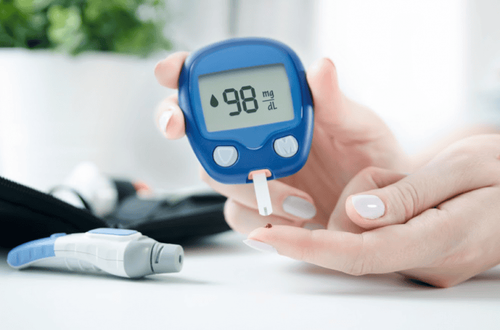
Bệnh tiểu đường. là một trong nguyên nhân khiến da mí mắt chảy xệ
14. Botox
Botulinum toxin (Botox) can paralyze your muscles, like the ones that cause wrinkles. You may not have any problems with Botox, but toxins can enter the muscle that controls your upper eyelid. Your ptosis should improve over time and possibly apraclonidine eye drops to help.15. Mitochondrial myopathies
Genetic diseases can make it difficult for mitochondria to function. It is what powers most of the cells in your body. Your eyes and eyelids may become weak. Children with mitochondrial problems should have regular eye exams. Your doctor will provide nutritional supplements such as creatine, carnitine or coenzyme Q10 to help with the mitochondria.Above are the causes of sagging eyelids. Hopefully the above information can help you prevent sagging eyes as well as timely treat and care for the wrinkled eye area.
=>>Advice from Master, Doctor Hoang Thanh Nga - Eye Doctor - Department of Medical Examination & Internal Medicine - Vinmec Ha Long International Hospital: People with sagging eyelids need to go to the doctor soon for treatment. timely treatment, avoid complications caused by the disease. Vinmec International General Hospital has full human resources and modern equipment to help diagnose and treat eye diseases.
Please dial HOTLINE for more information or register for an appointment HERE. Download MyVinmec app to make appointments faster and to manage your bookings easily.
Reference source: webmd.com






